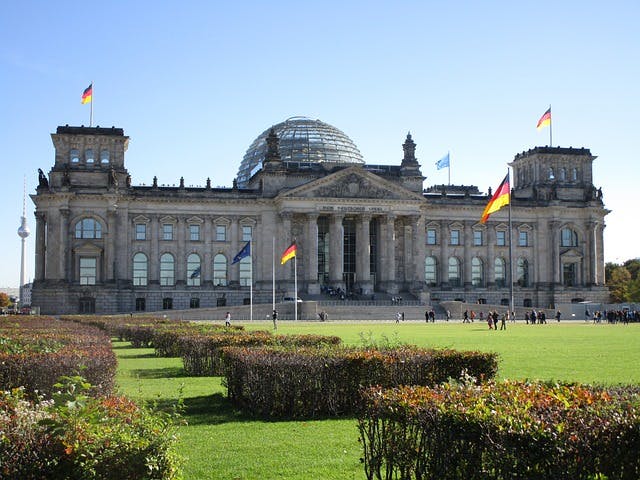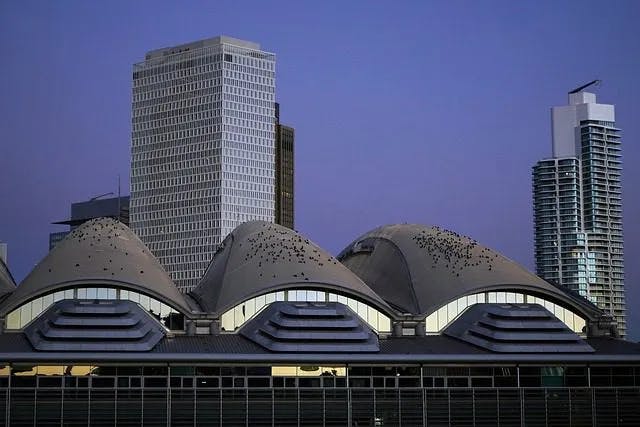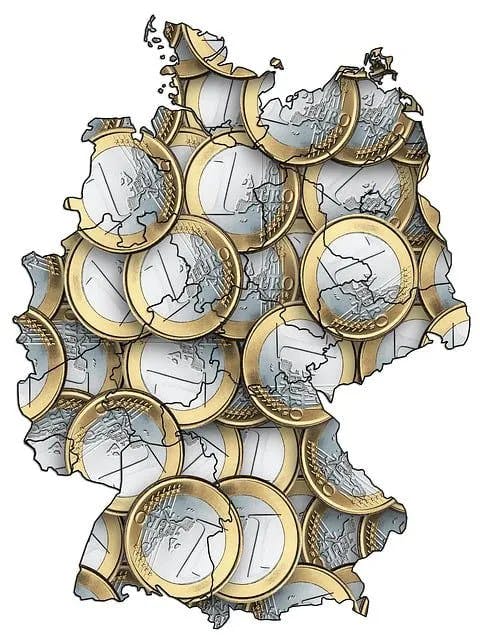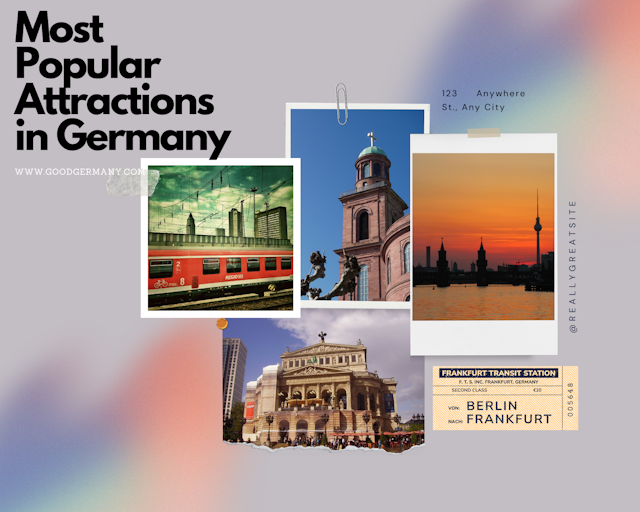Reichstag building
2023-11-10

Introduction
The Reichstag building stands as a testament to Germany's rich history, resilience, and commitment to democracy. This iconic structure has witnessed pivotal moments in the nation's narrative, from its construction to surviving the ravages of war and emerging as a symbol of modern Germany.

Historical Significance of the Reichstag Building
Construction and Architecture
The Reichstag, designed by Paul Wallot, was inaugurated in 1894. Its architectural grandeur reflects the aspirations of a unified Germany during the late 19th century. The building's distinctive features and imposing presence are a nod to the political ambitions of the time.
Role in German History
As the seat of the German parliament, the Reichstag played a central role in shaping the nation's destiny. It bore witness to the tumultuous events of both World Wars, including the establishment of the Weimar Republic in its hallowed chambers.
The Reichstag Fire
Events Leading to the Fire
The Reichstag Fire of 1933 marked a dark chapter in German history. The mysterious blaze was a catalyst for significant political changes, providing a pretext for the Nazi party to consolidate power.
Impact on German Politics
The aftermath of the fire saw the erosion of democratic institutions, paving the way for the ascent of Adolf Hitler. The Reichstag's fate became entwined with the authoritarian regime, altering its role and significance.
Destruction and Restoration
World War II Damage
During World War II, the Reichstag suffered extensive damage, becoming a poignant symbol of the war's destruction. Its shattered dome and crumbling façade mirrored the broader devastation experienced by Germany.
Post-War Rebuilding
In the post-war era, the reconstruction of the Reichstag became a symbol of Germany's rebirth. The restoration efforts aimed not only at rebuilding the physical structure but also reinstating the democratic ideals it represented.
The Modern Reichstag
Architectural Changes
After German reunification in 1990, the Reichstag underwent significant architectural modifications, most notably the addition of a glass dome by Sir Norman Foster. This modern touch symbolizes transparency and openness in the democratic process.
Symbolic Importance
Today, the Reichstag stands as a symbol of Germany's commitment to democracy and unity. Its façade juxtaposes historic elements with modernity, embodying the nation's ability to reconcile its past with a forward-looking vision.
Reichstag Building Tours
Visitor Experience
Tourists visiting the Reichstag are treated to a unique blend of history and contemporary architecture. Guided tours provide insights into the building's storied past and its role in shaping Germany's political landscape.
Notable Features
The Reichstag boasts several notable features, including the Plenary Chamber, where key political decisions are made, and the iconic glass dome, offering panoramic views of Berlin.

The Reichstag Dome
Design and Purpose
The glass dome, a striking addition to the Reichstag, serves both aesthetic and functional purposes. Its design allows natural light to illuminate the Plenary Chamber below, while its transparent nature symbolizes governmental transparency.
Panoramic Views
Visitors ascending the dome are treated to breathtaking panoramic views of Berlin. The city unfolds below, providing a unique perspective on the historic and modern facets of Germany's capital.
Cultural and Political Events
Hosting Important Events
The Reichstag continues to play a central role in hosting significant cultural and political events. From state visits to international conferences, the building remains a focal point for both national and global activities.
Significance in Today's Germany
In contemporary Germany, the Reichstag is not merely a historical artifact but a dynamic symbol of the nation's democratic ethos. It embodies the resilience of German democracy and its ability to withstand historical challenges.

Reichstag Building in Popular Culture
Depictions in Media
The Reichstag has left an indelible mark on popular culture, appearing in various films, documentaries, and literature. Its iconic image often serves as a backdrop for stories exploring themes of history, politics, and resilience.
Cultural References
The building's image is frequently employed in political cartoons, symbolizing democracy and freedom. Its silhouette is instantly recognizable, making it a powerful cultural reference.
Sustainability Features
Green Initiatives
The Reichstag sets an example in sustainability with its eco-friendly initiatives. Solar panels on the roof contribute to energy generation, showcasing a commitment to environmentally conscious practices.
Environmental Impact
These sustainability measures not only reduce the building's environmental footprint but also serve as a model for other structures worldwide. The Reichstag stands as a symbol of responsible architecture in the face of global environmental challenges.
Reichstag Building's Impact on Tourism
Tourist Attractions Nearby
Surrounded by iconic landmarks such as the Brandenburg Gate and the Berlin Wall, the Reichstag is a central point in Berlin's tourist circuit. Its historical significance and architectural marvel attract millions of visitors annually.
Visitor Numbers and Trends
Tourism statistics indicate a steady rise in visitors to the Reichstag, reflecting the global interest in its history and architecture. The building's popularity contributes significantly to Berlin's tourism industry.
Challenges and Controversies
Political Debates
The Reichstag has been at the center of political debates, with discussions ranging from its role in shaping German history to its symbolic significance. Different political ideologies interpret the building in diverse ways, sparking ongoing dialogues.
Architectural Criticisms
Despite its iconic status, the Reichstag has faced architectural criticisms, with some arguing that modern additions clash with its historical integrity. These debates highlight the delicate balance between preserving history and embracing contemporary design.
Future Prospects
Potential Developments
As Germany continues to evolve, the Reichstag's future is likely to see further developments. Potential renovations or additions may be considered to enhance its functionality while preserving its historical and symbolic value.
Continued Relevance
Regardless of future changes, the Reichstag is poised to maintain its relevance as a symbol of democracy and resilience. Its role in shaping Germany's narrative will endure, adapting to the challenges and triumphs of each era.
Conclusion
In conclusion, the Reichstag building stands as an architectural marvel, a witness to history, and a symbol of democratic resilience. From its construction to the challenges it faced, the Reichstag reflects Germany's ability to overcome adversity and emerge stronger. As a tourist attraction, cultural symbol, and political hub, the Reichstag remains a dynamic force in shaping Germany's identity.
FAQs
Is the Reichstag open to the public?
Yes, the Reichstag offers guided tours that allow the public to explore its history and architecture.
What is the significance of the glass dome?
The glass dome symbolizes transparency in government and provides panoramic views of Berlin.
How has the Reichstag contributed to sustainability?
The building incorporates solar panels and other eco-friendly initiatives to minimize its environmental impact.
Are there any ongoing controversies surrounding the Reichstag?
Yes, debates persist regarding its role in politics and the balance between historical preservation and modernization.
Can visitors access the Plenary Chamber during tours?
No, the Plenary Chamber is a restricted area, but visitors can observe it from designated areas during tours.
Share
Tag
Related Blog

The 14 Best Places to Visit in Germany
2023-08-19
Berlin Travel Tip 15
2023-12-27
About FlixBus 15 Truths
2023-12-21
Dresden Travel Recommendations – Top 12
2023-07-14
[Nuremberg(Nürnberg)] - Top 10 Travel
2023-12-10
1 Day Travel in Würzburg
2023-12-12
Rothenburg (ob der Tauber) Travel - Top 10
2023-12-12
Top 5 German Christmas markets
2023-11-13
Reichstag building
2023-11-10
Top 10 in the Black Forest(Schwarzwald), Germany
2023-09-12
Exploring the Significance of Frankfurt Messe: A Global Business Hub
2023-08-25
Germany Weather
2023-08-22
German Currency | Exchange Rate & History
2023-08-22
Oktoberfest 2023: A Celebration of Tradition and Beer
2023-08-20
The 16 States of Germany
2023-08-13
Heidelberg Travel Guide – Tip 10
2023-08-08
Frankfurt am Main Travel Guide - 10 List
2023-08-04
Dresden Christmas Market(Dresdner Striezelmarkt)
2023-07-14
Most Popular Attractions in Germany
2023-07-06